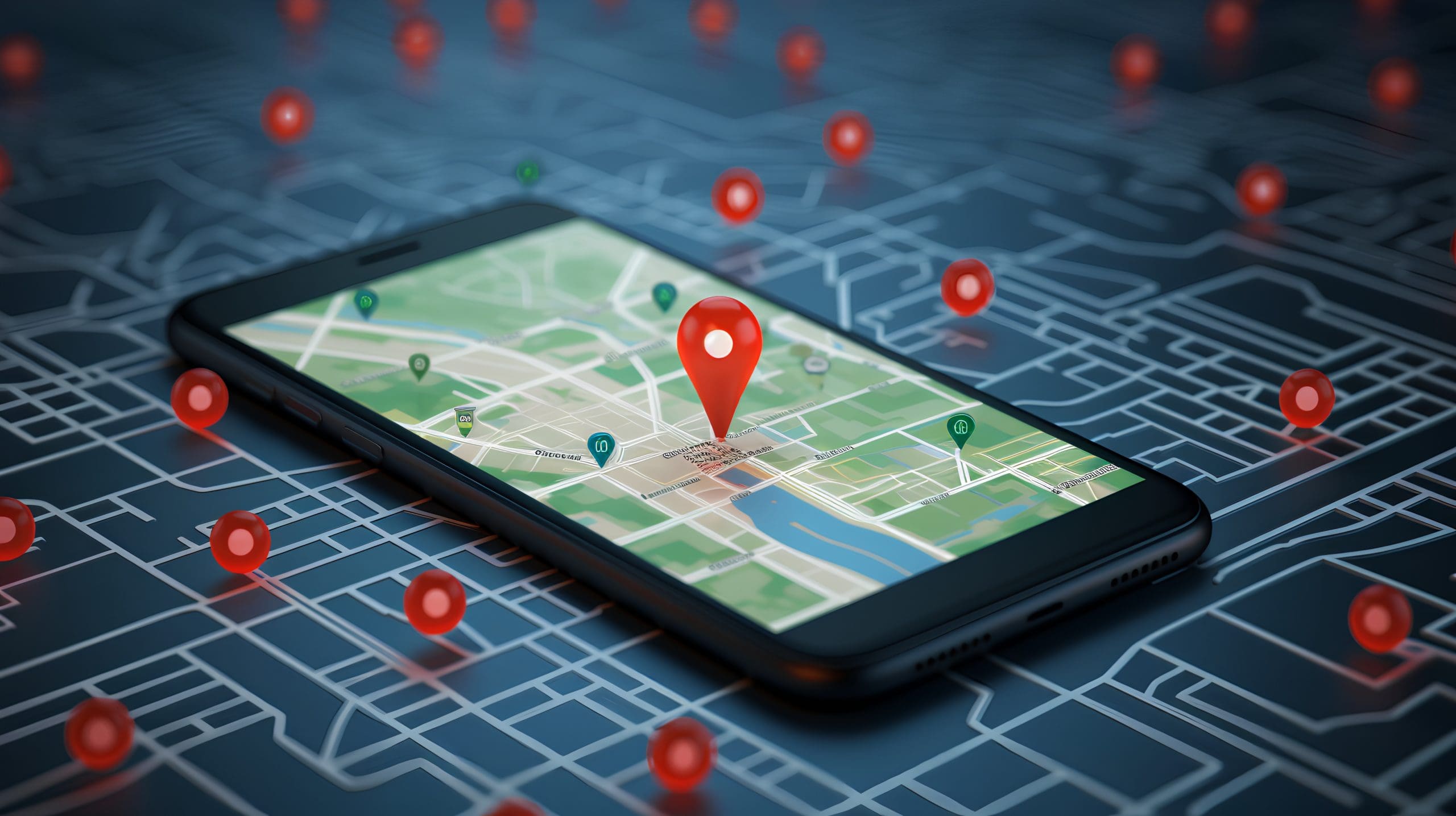The Dangers of Location Tracking in Social Media Apps

Imagine you’re checking in at your favorite coffee shop on a social media app to share your morning routine with friends. You’re not just broadcasting your latte preference but also unwittingly revealing your location to a broader audience than you might expect.
As you navigate the intricate web of social media, it’s vital to understand the implications of location tracking—a feature that’s become a staple in the digital age. While it can be a tool for personalization and social connectivity, it also opens the door to privacy invasions, and in some cases, it can lead to real-world threats such as stalking or theft.
As you consider the invisible threads of data you leave behind, think about the potential risks that may be lurking behind those casual check-ins and location tags. You’ll want to be aware of who might be collecting this information and for what purposes, as the implications of compromised location data could extend far beyond an interrupted coffee break.
Understanding Location Tracking
To grasp the implications of location tracking, it’s essential to recognize how, through social media apps, your movements can be meticulously recorded and analyzed. When you check in at a restaurant, tag a location in a photo, or simply have an app open in the background with location permissions enabled, you’re contributing to a digital map of your daily life.
This data isn’t just for your convenience. It’s highly valuable for companies to understand consumer behavior, target advertising, and even predict future movements. But you’ve got to wonder, who else has access to this information? The answer is more complex than you’d hope.
Your location data may be shared with third-party advertisers, and analytics firms, or possibly exposed through security breaches. There’s also the legal realm to consider; law enforcement can request access to this data under certain conditions.
It’s crucial to navigate these digital spaces with a sense of awareness. Adjust privacy settings to limit location sharing, and question whether convenience outweighs the risks involved. Remember, once you’ve shared your location, it’s out there. You can’t pull it back. Make informed choices to protect your privacy and maintain control over your digital footprint.
Privacy Invasion Concerns
As you consider the vast digital map of your life constructed by social media apps, it’s imperative to recognize how this information becomes a gateway for privacy invasion. The risks associated with oversharing your location can be manifold and, at times, insidious.
- Cyberstalking
- Intensified Risks: When your movements are trackable online, you’re more susceptible to being followed by individuals with malicious intent.
- Pattern Recognition: Predators may discern your routines and exploit this knowledge to your detriment.
- Unwanted Attention: Sharing too much can attract the wrong kind of interest, infringing upon your peace of mind.
- Data Profiling
- Targeted Advertising: Your data isn’t just for show; it’s harvested to tailor advertisements, potentially manipulating your spending habits.
- Behavioral Prediction: Companies analyze your whereabouts to predict your needs, desires, or future actions, often without your explicit consent.
- Information Selling: Your location data, bundled with others, is a commodity sold to third parties, further propagating privacy breaches.
- Legal Implications
- Surveillance: Authorities might access your data without a warrant, expanding the scope of government oversight.
- Employment Concerns: Employers could monitor your off-duty activities, potentially affecting job security or career progression.
- Legal Evidence: In litigation, your past locations could be used against you, regardless of context.
Remain cautious and critically assess the potential repercussions of your digital footprint. Your privacy isn’t just a personal asset; it’s a boundary that requires vigilant protection.
Potential for Stalking
Social media apps’ location services can inadvertently turn users into targets for stalkers seeking to exploit their regular routines and movements. When you share your whereabouts, you mightn’t realize who’s keeping tabs on you. It’s not just friends and family; it could be someone with malicious intent. They don’t need sophisticated tools—simply following your check-ins and tagged locations can paint a clear picture of your daily life.
You’ve got to consider the implications of this digital footprint. It’s not about paranoia; it’s about being smart with your private information. Stalkers can use patterns derived from your social media to predict where you’ll be and when. This isn’t just a theory; real-life incidents have shown time and again how location data can be misused.
Data Harvesting Practices
Frequently, companies behind social media platforms systematically collect and analyze your location data, often under the guise of improving services or personalizing your experience. You mightn’t realize the extent to which your movements are tracked, recorded, and utilized for various purposes:
- Data Monetization:
- Selling to advertisers for targeted campaigns
- Enhancing consumer profiles for marketing strategies
- Predicting purchasing behaviors based on visit patterns
- Product Development:
- Tailoring features based on geographic usage trends
- Identifying popular locations to introduce new services
- Optimizing app interface for region-specific user preferences
- Strategic Partnerships:
- Sharing insights with third-party companies for cross-promotion
- Collaborating on location-based offers or events
- Pooling data to enrich mutual understanding of user demographics
Understandably, this might make you cautious about the digital footprint you’re leaving behind. It’s not just about the ads you see; it’s about the broader implications of your privacy being compromised. As data harvesting practices become more sophisticated, the potential for misuse grows. You’re not just sharing your whereabouts with friends—you’re potentially exposing intimate details of your life to a network of unseen entities.
Always be mindful of the permissions you grant and the settings you choose in your social apps.
Impact on Personal Safety
Your safety may be at risk when location data is shared through social media apps, as it can potentially expose you to unwanted attention or danger. By broadcasting your whereabouts, you’re essentially providing a roadmap to your routine and the locations you frequent. This can attract stalkers or individuals with malicious intent who may see an opportunity to intrude upon your privacy or worse.
Moreover, oversharing your location can compromise your home security. If you’re posting in real-time from a vacation spot, it’s a clear signal that your home is unoccupied, making it a possible target for burglary.
Analyzing the risks, you should be cautious about the amount and nature of location information you share. It’s not just about the immediate danger, but also the cumulative effect of data that builds up a pattern over time, which can be pieced together to predict your future movements.
To protect yourself, it’s wise to limit location sharing to moments when it’s necessary or to groups of trusted contacts. Always review app permissions and disable location tracking when it’s not in use.
Your safety is paramount, and being cautious with location data is a critical step in safeguarding it.
Mitigating Location Risks
You can significantly reduce your digital footprint by adjusting privacy settings to limit who sees your location information.
It’s also wise to disable location-sharing features when they’re not essential for your social media use.
Staying informed about the potential geo-risks helps you navigate social media platforms more securely and with a heightened sense of control.
Adjust Privacy Settings
Amid growing concerns over digital privacy, adjusting social media settings remains a crucial step in mitigating the risks associated with location tracking. You’re tasked with a delicate balance: sharing enough to stay connected, yet not so much that your security is compromised. Here’s how you can tighten your digital footprint:
- Review App Permissions
- Limit location access to ‘While Using the App’
- Disable location tracking for unnecessary functions
- Turn off location sharing in the background
- Customize Privacy Settings
- Set posts to private or friends-only
- Avoid location tags in posts and pictures
- Review friend lists to share with trusted contacts only
- Regularly Update Preferences
- Check settings after app updates, as defaults can change
- Be cautious with new features that leverage location data
- Audit your digital profiles periodically to remove unwanted location information
Stay vigilant and regularly reassess your settings to protect your whereabouts.
Disable Location Sharing
While adjusting privacy settings can significantly reduce your digital footprint, outright disabling location sharing offers a more robust defense against potential privacy intrusions. You must scrutinize your social media apps and determine which ones have access to your location data. Often, location sharing isn’t essential for the app’s functionality, and turning it off can shield you from unwarranted tracking.
Carefully navigate through each app’s settings and disable any location access that doesn’t serve a clear purpose. Remember, it’s not just about the convenience of geotagged posts; it’s about who else can access that information. By proactively disabling location sharing, you’re taking a critical step towards safeguarding your privacy.
It’s a deliberate choice to not broadcast your every move, making it harder for your location to be exploited.
Educate on Geo-Risks
Understanding the geo-risks associated with social media is vital, as location data can often reveal more about your habits and patterns than you may realize. It’s crucial to recognize how location data is collected and used.
- Apps may track your location in real-time or check-in data.
- Advertisers often use this data to tailor ads, potentially compromising your privacy.
- Social engineering attacks can originate from pattern analysis.
Being cautious with your digital footprint isn’t just about privacy; it’s also about safety. Analyze your app permissions regularly and turn off location sharing when it’s not necessary.
Conclusion
You’ve seen the risks: from privacy invasion to stalking, location tracking in social media isn’t trivial. Data harvesting can turn personal details into commodities, jeopardizing your safety. It’s not about paranoia, but awareness.
To mitigate these dangers, scrutinize app settings, limit sharing, and stay informed. Your digital footprint is your responsibility—treat location data with the caution it deserves.
Stay vigilant, stay safe, and remember, the control to protect your whereabouts ultimately lies in your hands.





